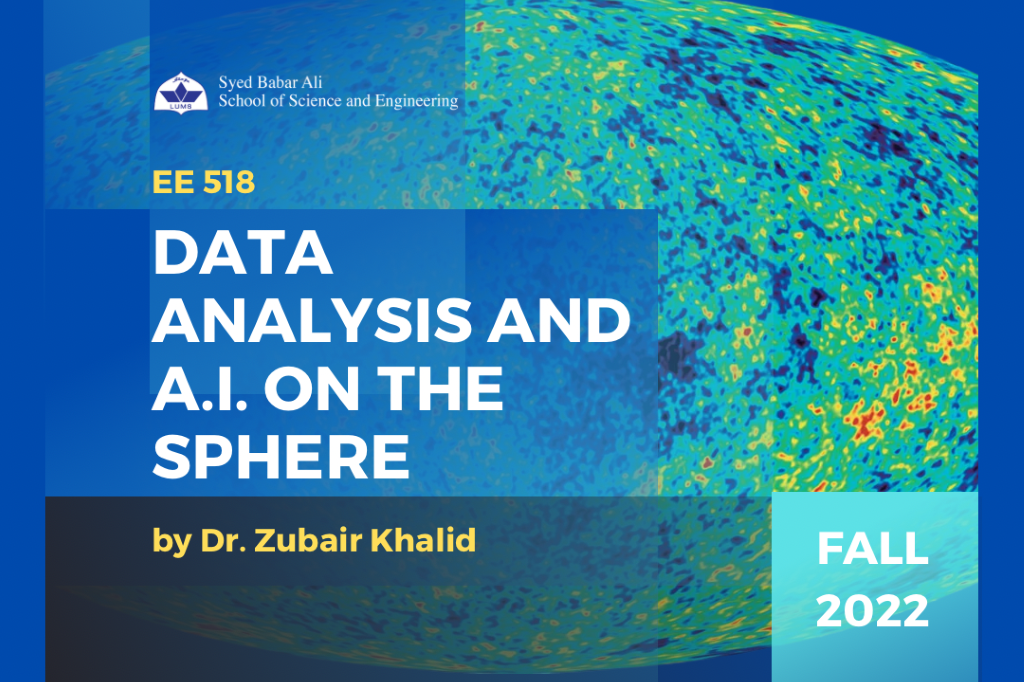
Course Advert: EE 518 –Data Analysis and AI on the Sphere | Fall 2022
Data defined on the 2-dimensional surface of the 2-sphere arise whenever the underlying configuration of the problem has a spherical geometry. Hence, such data has inherent angular dependence and is encountered in various fields of science and engineering, such as wireless communication, 3D beamforming, computer graphics, medical imaging, acoustics, geodesy, quantum chemistry, cosmology, astronomy and planetary sciences. Examples of data on the sphere include gravitational, topographic and magnetic fields of the planets, cosmic microwave background (CMB), a relic radiation from the Big Bang, pouring down on us from space, electromagnetic radiation pattern of an antenna array in spherical geometry, acoustic signal received using spherical configuration of microphones etc. As opposed to 1D and multidimensional Euclidean domain data, which are defined on flat Euclidean domains, spherical data is defined on a curved domain due to which extension of Euclidean domain analysis and processing techniques to the spherical domain is not a trivial task. However, over the years, a lot of methods developed for Euclidean domain signals/data have been carefully extended to process data on the sphere to serve the needs of above-mentioned applications and scientific areas. This course provides a thorough introduction to the theoretical foundations of data analysis, processing and learning on the sphere. Furthermore, the students will also learn to visualize the data in the spatial (spherical) and harmonic domain using Matlab.
COURSE PREREQUISITE(S):
Pre-requisites: None
Co-requisites: None
The students are expected to have a basic understanding of linear algebra, vector spaces, Hilbert spaces and functional analysis.
COURSE OBJECTIVES:
In broad brush, this course aims to:
• Provide a thorough introduction to both fundamental and advanced topics related to data representation on the sphere in both the spatial and harmonic domains.
• Provide understanding of Hilbert space of spherical signals and different subspaces
• understand the notion of rotation of the data and its formulation in both the spatial and spectral domain.
• Provide a detailed review of Slepian spatial-spectral concentration problem and its applications.
• Develop computationally efficient methods to analyze and process data on the sphere.
• Train the students to Implement convolution neural networks on the sphere and carry out so-called geometric deep learning.
• Apply these data analysis methods in 2-3 application areas.

